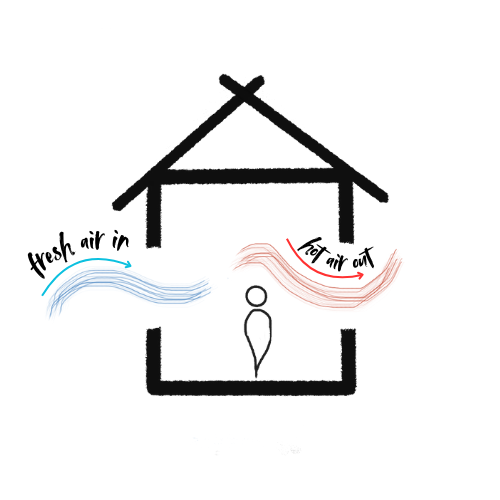What are the Green Building Certifications?
The drive towards greener practices in the construction sector has led to an increase in the prevalence and importance of sustainable building certifications. These certifications do not just serve as a seal of ecological credentials for construction projects, but also as a roadmap for incorporating sustainable practices from the ground up.
They are indicators that a building has been designed, built, and operated in a way that minimises its environmental impact and maximises resource efficiency. With growing awareness about climate change and the need for sustainable building certification, these certifications have become essential in the Brazilian real estate market.
Global Green Building Certifications
The recognition of sustainable green building certifications underscores the crucial role of certifications. As parameters of environmental efficiency, they drive the construction industry towards a greener future.
- LEED, or Leadership in Energy and Environmental Design, outlines a comprehensive framework for sustainable construction used worldwide. A building aspiring for LEED certification undergoes meticulous evaluation based on energy savings, water efficiency, CO2 emissions reduction, improved indoor environmental quality, and resource management, along with sensitivity to its impacts. Originally developed in the United States, LEED has expanded to over 165 countries due to its comprehensive framework, international recognition, and flexibility in adapting to different climate zones and building types.
- The BREEAM (Building Research Establishment Environmental Assessment Method) certification also plays a vital role in setting sustainable building standards on a global scale. Originating from the UK, BREEAM certification is one of the most widely used environmental assessment methods internationally, now implemented in over 80 countries. It evaluates a range of categories, including energy, health and wellbeing, innovation, materials, among others. Its international versions are adapted to suit local conditions while maintaining core sustainability principles. BREEAM certification encourages the construction industry to exceed legal regulations and advance towards low-impact environmental building practices, thereby ensuring a more sustainable future.
- WELL Building Standard focuses specifically on human health and wellness within the built environment. It evaluates factors such as air and water quality, light, comfort, fitness, nourishment, and mind. WELL certified buildings are designed to enhance the health, happiness, and productivity of their occupants. This certification has gained international adoption because of its unique focus on human health rather than just environmental impacts. It’s frequently used globally as a complementary certification alongside environmentally-focused systems like LEED and BREEAM, allowing buildings to address both ecological and human-centred sustainability.
- NABERS (National Australian Built Environment Rating System) provides a rating system that measures the environmental performance of Australian buildings, tenancies, and homes. NABERS assesses energy efficiency, water usage, waste management and indoor environment quality, offering a star rating that enables easy comparison between properties. While primarily Australian, NABERS has been adapted for use in New Zealand and the UK, and is influencing rating systems in other countries.
- NABERS UK, launched in November 2021, brings the operational performance focus to British buildings, initially focusing on offices with plans to expand to other building types. The UK adaptation was developed to address the “performance gap” between designed and actual energy efficiency in buildings, and is administered by BRE (Building Research Establishment) in partnership with the Better Buildings Partnership. Its operational performance focus (measuring actual rather than predicted performance) has made it a model for other countries developing their own systems. This approach has proven highly effective in driving market transformation towards sustainability in Australia’s built environment and is now beginning to show similar promise in the UK market.
- Mostadam, developed by the Saudi Green Building Forum, is a rating system tailored specifically for the Middle Eastern climate and cultural context. It evaluates buildings on energy efficiency, water conservation, materials selection, and indoor environmental quality with special consideration for the unique challenges of arid environments. While not as globally widespread as LEED or BREEAM, Mostadam represents an important trend toward region-specific certifications that address particular environmental challenges like water scarcity and extreme heat. Mostadam certification represents a significant step towards regionalised sustainability standards that address specific geographical and cultural needs.
Adopting such standards demonstrates a commitment to sustainable development and echoes the global call for sustainable urban planning. By meeting these stringent standards, the construction industry showcases its ability to deliver buildings that not only meet contemporary needs but are also designed with foresight to serve future generations without compromising ecological values.
It is important to emphasise the significance of also understanding the local certifications of each country. Climate varies significantly from region to region, which implies that sustainable practices need to be adapted for each locality. Therefore, more and more countries are creating their own sustainable building standards to meet the specific needs of their climate and environment.
Beyond Certification: Sustainable Construction Practices
Delving into the domain of sustainable construction goes beyond seeking certifications. The sustainability framework must be incorporated into a project’s DNA, from initial conception to completion and beyond. An integrated approach, where sustainable construction materials and practices are an anticipated conclusion rather than a checklist item, leads to developments that not only respect the environment but also improve the quality of life for their inhabitants.
Adopting green construction techniques allows for efficient use of resources, reducing waste and decreasing energy consumption. This method translates into advantages for all stakeholders, providing cost savings and promoting health and well-being for end users. In this aspect, sustainable construction is not just a series of practices but a philosophy of conscious interaction with our environment.
The commitment to environmental efficiency and sustainable construction solutions also prepares companies within the industry to adapt to evolving regulations and consumer expectations. Sustainable practices yield long-term benefits, contributing positively to both the planet’s macroclimate and the microclimates within architectural spaces.
From selecting low-impact construction materials to implementing energy generation systems, each sustainable measure taken is a step toward building a constructed environment that harmonises with the natural world. This proactive stance ensures that projects are future-ready and aligned with growing global climate change concerns.
Innovations in Sustainable Construction
The large-scale integration of technologies, such as bioclimatic computational simulations, is not just helping sustainable construction but revolutionising it. These technological innovations, which are rapidly emerging, refine and enhance design processes, substantially increase precision in sustainable construction practices, and streamline construction project management in an efficient and effective manner.
These computational simulations, in particular, offer sustainability consultants the unique ability to overlay digital data onto physical environments. This provides a tangible, almost palpable vision of the sustainable potential within a building footprint even before its actual construction. It’s as if we could foresee a building’s energy efficiency before it physically exists.
This digital visualisation, besides being a technological advancement, allows project teams to proactively identify and address potential energy inefficiencies. This facilitates the optimisation of vital elements such as natural light, shading, and ventilation — all fundamental to reducing a building’s carbon footprint. This step is vital for a building’s sustainable construction credentials, as it aims for a future where buildings are not only built but also operate in a sustainable and environmentally friendly manner.
To understand a bit more about what these computational simulations are, I have some posts about natural lighting, thermal comfort, and natural ventilation where I show and recommend some software that I use in my projects. You can access them by clicking on the links below:
- Natural Lighting: Studies and Simulations
- Thermal Comfort: Understanding Metrics and Tools
- Natural Ventilation: Principles and Strategies
Embracing Sustainable Urban Development
Sustainable construction is at the forefront of shaping cities equipped for the future, a future grounded in the well-being of both the environment and communities. This collective endeavour requires an unwavering commitment from all stakeholders in the construction industry, from architects and engineers to government bodies and residents. It’s not just about putting practices in place, but fostering an ethic where sustainable construction is the norm, not the exception. You have the power to steer this transformative journey toward environmental efficiency and sustainability in urban environments.
Builders and developers must prioritise the use of eco-friendly materials and seek building certifications. These certifications not only symbolise a commitment to sustainable construction — they also establish a benchmark for industry excellence and contribute to a building’s ecological credentials. However, the journey doesn’t end with certification; it’s an ongoing process of adopting cutting-edge construction solutions and continuously improving sustainability standards. By doing so, the construction industry not only meets current trends, it paves the way for innovation and resilience in urban development.
Urban planners and policy makers play a key role in integrating sustainable construction into municipal planning codes, ensuring that new projects align with environmental efficiency criteria. This proactive approach ensures that sustainable development is deeply rooted in urban growth strategies. Moreover, by embracing sustainable construction practices, cities not only protect natural resources but also offer their citizens healthier living spaces, thus elevating the quality of urban life.
Finally, the call to action is clear: joining forces in the pursuit of sustainable urban development. Embracing green construction methodologies, investing in sustainable infrastructure, and committing to continuous education and innovation. Our actions today resonate with the future we aim to create.







It’s inspiring to see the growing emphasis on green building certifications and sustainable practices in the construction industry! 🌍🏗️ These certifications not only highlight a commitment to environmental stewardship but also pave the way for healthier communities and innovative urban development. By adopting eco-friendly materials and energy-efficient designs, we can create spaces that truly harmonize with nature while benefiting everyone involved. Let’s continue pushing for sustainability in our building practices for a better future! 🌱✨